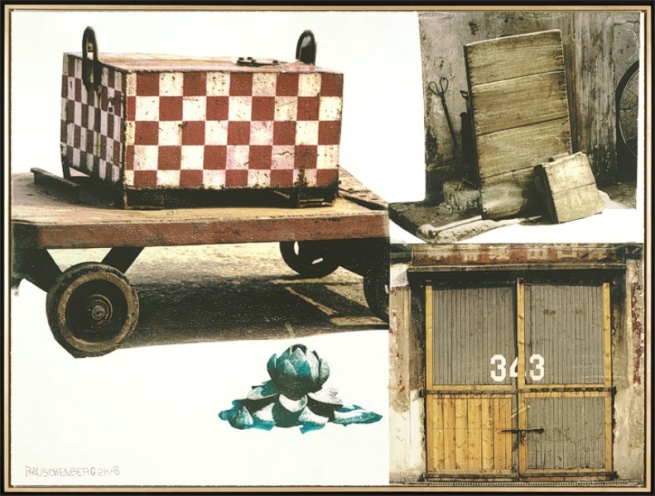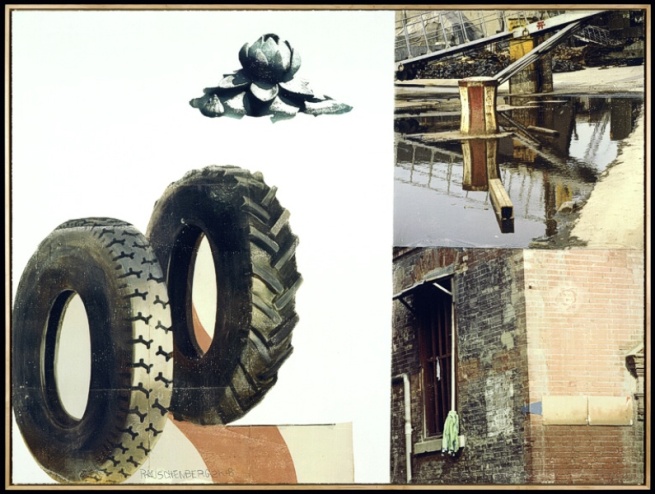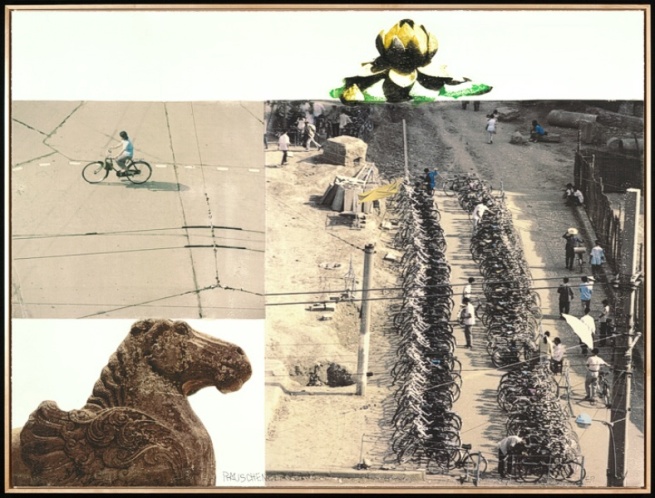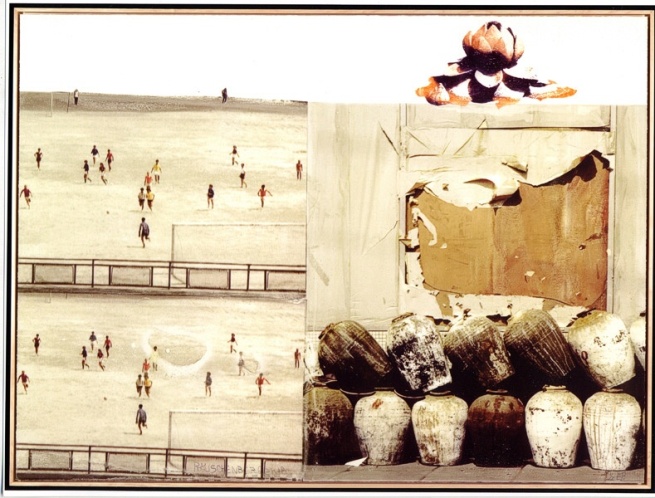 Lotus V (The Lotus Series)
Lotus V (The Lotus Series)
Pigmented ink-jet with photogravure on Somerset velvet
45 3/4 x 60 x 1 3/4 inches
2008
 Lotus I (The Lotus Series)
Lotus I (The Lotus Series)
Pigmented ink-jet with photogravure on Somerset velvet
45 3/4 x 60 x 1 3/4 inches
2008
 Lotus III (The Lotus Series)
Lotus III (The Lotus Series)
Pigmented ink-jet with photogravure on Somerset velvet
45 3/4 x 60 x 1 3/4 inches
2008
 Lotus II (The Lotus Series)
Lotus II (The Lotus Series)
Pigmented ink-jet with photogravure on Somerset velvet
45 3/4 x 60 x 1 3/4 inches
2008
 Lotus VI (The Lotus Series)
Lotus VI (The Lotus Series)
Pigmented ink-jet with photogravure on Somerset velvet
45 3/4 x 60 x 1 3/4 inches
2008
 Lotus IX (The Lotus Series)
Lotus IX (The Lotus Series)
Pigmented ink-jet with photogravure on Somerset velvet
45 3/4 x 60 x 1 3/4 inches
2008
When we are looking at The Lotus Series, like most of Rauschenberg’s work, we never see a photograph in isolation. Even though he was an excellent photographer, at some level he must have felt that a single image would not be real enough, unable to convey all of the life and energy that he saw spinning around him. The single image was too fixed, too stable, too much about one-point perspective. By contrast, he wanted to convey what it felt like to be alive. He was not trying to make art with the prints, but he was trying to show you the art that surrounds us everyday. Almost anything can be art; you just have to look at it in a certain way. In an uncanny way, he had the incredible ability to find Combines no matter where he went. Early on in his career he made them himself, later he just took photographs when he encountered them during his travels. Rauschenberg was opening himself to the world around him, trying to be open to the potential for art latent in his every experience.
The new prints seem to be less about objects being photographed and transferred to a print, but more about the raw experience of a place. The original negatives from his trip to China (1983-85) were destroyed in a hurricane. Fortunately, small prints were discovered that would become the source images for these large-scale prints of The Lotus Series. These images were scanned by Bill Goldston who was able to enlarge the images and correct the color. The next step was to print out the source images in different sizes so that Rauschenberg would be able to arrange the images for the final prints. The enlarged photos of his trip to China were made with an ink that allows the image to be transferred to another piece of paper by use of a solvent. This process eventually created an original, which was scanned and reproduced for the final prints. For me, this is a critical part of the Rauschenberg’s process; the photographs were the starting point, not the end point. [Extract : Portland Art]
The Lotus Series : Larissa Goldston Gallery
Robert Rauschenberg : Greenfield Sacks Gallery










































